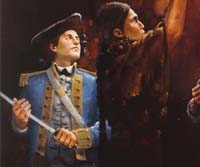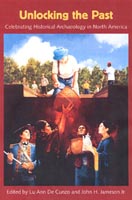Québec City, Canada
William Moss

In the 1990s, the Séminaire de Québec and the Musée de la Nouvelle-France, an occupant of the now extensive architectural complex, called in the city's archaeological team in advance of adding underground wings to the buildings. As extensive landscaping and construction had occurred within the complex over the centuries, even as recently as the early 1980s, we doubted that any elements of archaeological importance could remain. The project's promoters and the city's partner, the province's Culture and Communications Department, nonetheless agreed to carry out exploratory excavations in light of the site's rich history. All--even archaeologists!--were astounded to discover the vestiges of New France's first farmstead just a few centimeters below the surface of a courtyard where successive generations of students have contemplated, played handball, skated on winter ice, thrown marbles, or traded cards!
The amazing finds would require the collaboration of historical archaeologists, prehistorians, historians, and specialists in historic objects and past environments, plants, animals, insects, and parasites to unravel their meaning and full significance. The combined work of these specialists tells the story of Québec City's passage from a trading post to an urban center during the first decades of French rule on the North American continent.
Archaeologists promptly back-filled the structures uncovered in the 1990s with fine sand. We haven't yet fully excavated the site, but we have protected it until we can explore its full potential. Waiting patiently for new research opportunities to occur is also a part of contemporary urban archaeology! More importantly, this research has shed new light on this most fascinating period. The surprising discovery of an archaeological jewel beneath an architectural gem is only one example why UNESCO has recognized Québec City, the birthplace of French civilization in North America, as a World Heritage treasure.
William Moss is the Principal Archaeologist for the City of Quebec.
